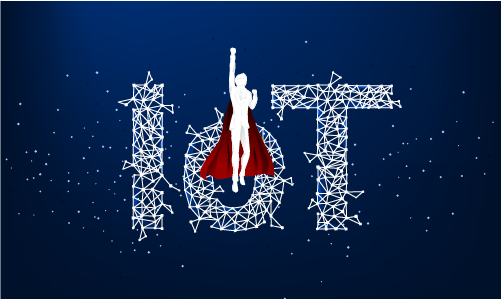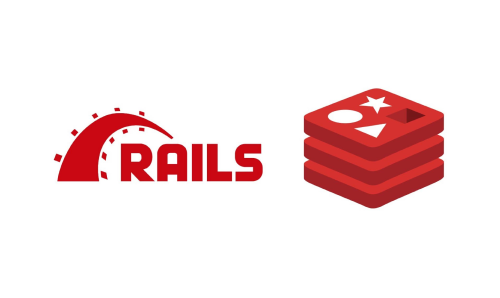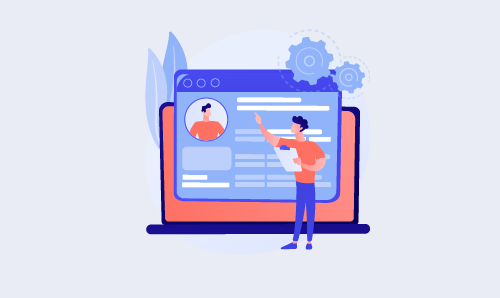7 Biggest Web Development Trends in 2022
Nov 17, 2021 12322 seen
Web Development in 2022
Technology is changing rapidly and trends in website design are not out of the question. When people visit your site, the last thing you want to do is lose conversions because your site looks outdated or ignores important web standards.
Fortunately, our award-winning web design team stays up to date on all the latest trends in website development to create functional, user-friendly websites that work well and look great. We'll go over some of the most recent digital innovations, web development trends, standards, and forecasts for 2022.
1. Artificial Intelligence

AI is one of the biggest trends in web development for sure.
Artificial intelligence (AI) is always at the top of the list when discussing the future of technology. There has been significant progress in the field of artificial intelligence in the last year. AlphaGo, a program built by Google DeepMind, became the first to beat a professional Go player. If you don't know what I'm talking about, Go is one of the easiest coding languages to learn right now.The biggest tech companies, such as Google, Microsoft, and Facebook, have been releasing their AI technology to be used by the public. Artificial intelligence is already being used by large applications, such as Google to improve search engines, or Wikipedia to identify inaccurate or damaged articles.
With more accessible access to the necessary tools for AI development, we can expect developers to start using AI in new and different ways in the new year. Furthermore, AI already features heavily in data analytics, so expect the rest to follow suit. One such example is AI-powered website creation. For example, suppose you sign up for The Grid. In that case, your AI web designer Molly will ask you questions about branding, colors, layout, and content before creating an aesthetically pleasing website for you using pre-programmed algorithms. You can ask Molly to update the website as many times as you want until it's perfect.
2. Virtual Reality

Another topic that always comes up when discussing the future of web development is virtual reality or VR. This trend has already started to take over the gaming industry. The Oculus Rift and PlayStation VR open up exciting new possibilities for the gaming world, but they don't stop there.
Companies including Google and Mozilla have begun work on APIs to help virtual reality technology move to the Internet. As standards evolve, we expect more and more applications to be developed using virtual reality technologies. Next year we will see virtual reality in applications ranging from news coverage to virtual real estate tours.
3. Internet of Things (IoT)

The Internet of Things is a movement in which normally non-Internet-connected entities are provided with the ability to connect to the network to send and receive data. These items can range from a toaster or a kettle to motor sensors or sensors embedded in concrete to detect cracks and weak points. Companies such as Xively and BugLabs are already developing APIs for communicating with IoT devices. Web developers are unlikely to be directly involved in the development of such devices, while user interface designers (UI Designers) are more likely to work with voice user interfaces. We will, however, most likely be involved in the development of applications that use, analyze, and display data from devices. APIs for communicating with IoT devices are already being developed by companies such as Xively and BugLabs.
While the Internet of Things offers many opportunities for innovation, some concerns have been raised, especially with regard to security. Web developers will undoubtedly face interesting challenges, such as assisting in the protection of our fittings and furniture from hackers.
4. Rails 5

The newest version of Rails, Rails 5, was released back in June 2016. We expect its popularity to grow as it continues to develop. This Ruby on Rails release contains several interesting additions that should be of interest to web developers:
-
Turbolinks 5 allows developers to build single page applications directly from the Rails stack, allowing links to fetch all HTML pages and replace body without the need for client-side JavaScript frameworks.
-
ActionCable is a new way of using WebSockets in Rails to build real-time applications. This makes it much easier to create notifications and chat functionality while still maintaining access to all of your ActiveRecord resources.
-
Rails 5 has also integrated the popular rails_api gem into its codebase. Developers can now easily create API-only applications in Rails and plug them into their favorite JavaScript or native frameworks.
5. Static Website Generators

Another big trend in web development are static website generators.
Static website generators create websites from plain text, usually stored in files rather than databases. In some cases, static websites generated by generators such as Jekyll have advantages such as increased speed, security, ease of deployment, and handling traffic surges. However, they lack the live content or user generated content (like comments) that have become mandatory on the Internet today.
As content delivery networks and APIs become an increasingly common way of life on the Internet and simplify the deployment of content and templates, many developers believe that static site generators could be an exciting area to watch over the coming year. Separating templates and markup from the "full stack" mindset can make static site generators "that" again.
6. Single Page Application(SPA)

Gone are the days when you had to have an action button on every page that led to another web page being downloaded from the server.
With a single-page application, you can have a website running on a single page. Not only does this reduce the need to click multiple buttons and then navigate to new pages, but a single-page website also accepts input and dynamically rewrites the page to respond much faster than traditional websites. This makes it possible to improve the quality of customer service at the expense of user engagement. With SPA the response is almost instantaneous and users have uninterrupted browsing.
7. Automation Testing on Clouds

No matter how brilliantly a web development company is designed and developed, it will be successful if thoroughly tested and verified for cross-browser compatibility.
People turn to various web browsers to visit a website in the modern era, but 64% of global market users prefer Chrome. But you can't afford to miss out on other browsers, which is why cloud test automation is one of the hottest web development trends that not only expands your reach but also improves your user experience.
To keep your site free of errors, web development companies may also offer a manual testing process to test the site's cross-browser compatibility. However, companies are always looking for faster testing cycles. Automated testing allows you to run cross-browser tests by writing test scripts using a popular framework like Selenium that reduces testing time and improves testing coverage.


